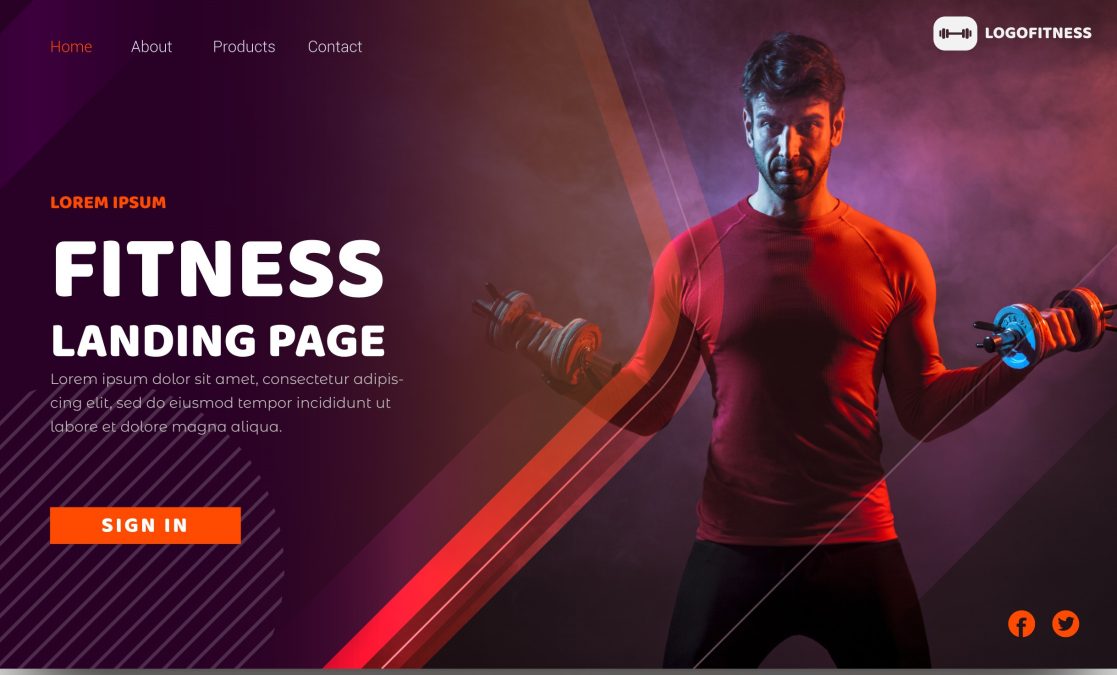The fitness industry is highly competitive, both offline and online. Simply having a great gym setup or a team of top-tier personal trainers isn’t enough anymore. If your gym doesn’t appear on the first page of Google when someone searches “gym near me” or “personal trainer in [city],” you’re missing out on a huge portion of local business. People don’t flip through directories or rely on word-of-mouth as much anymore. Instead, they trust Google to guide them.
This is where Local Gym SEO Tactics come into play.
Local SEO (Search Engine Optimization) is the process of optimizing your gym’s digital presence to rank higher in local search results. It allows you to compete with larger chains by ensuring your gym shows up when potential members in your area are actively looking for fitness options. Whether you run a boutique fitness studio, CrossFit gym, 24/7 access facility, or group training center, mastering local SEO ensures your visibility exactly where it matters most—your neighborhood.
In this guide, we’ll break down what Local Gym SEO Tactics are, why they’re crucial, and how to implement them step-by-step to increase local traffic, get more members, and dominate local Google search results—all without relying solely on paid ads. Let’s dive in.
Step 1: Fully Optimize Your Google Business Profile (GBP) for Local Discovery
Your Google Business Profile (formerly Google My Business) is the centerpiece of your local SEO presence. When people search for gyms or trainers near them, Google often pulls data directly from GBP to populate the “Local Pack” or Google Maps results. An optimized profile increases visibility and builds credibility.
What to include:
- Business Name (exact match with your branding)
- Full address and phone number
- Operating hours and holiday closures
- Website link and appointment URLs
- Categories (e.g., Gym, Personal Trainer, Yoga Studio)
- Keyword-rich business description using terms like “CrossFit gym in [City]” or “affordable fitness centre near [Downtown]”
Add engaging elements:
- High-quality images of your equipment, trainers, facilities, and classes
- Weekly posts about offers, updates, or fitness tips
- Q&A section updated with real answers from staff
- Reviews with replies to show active engagement
A complete and active GBP profile boosts trust signals and gives potential customers all the information they need to visit or contact your gym directly.
Step 2: Nail Your Keyword Research and Content Strategy for Local Search
To bring in qualified leads, you need to understand what your local audience is searching for and match their intent with relevant content. Keyword research helps you identify the exact terms people use when looking for gym-related services in your area.
Tools to use:
- Google Keyword Planner
- Ubersuggest
- SEMrush or Ahrefs
- Google Autocomplete and “People Also Ask”
Target keyword types:
- Service + Location: “personal training [City]”, “HIIT classes [Neighborhood]”
- Long-tail phrases: “best gym with swimming pool in [Area]”
- Brand-related: “[Your Gym Name] reviews”
How to implement:
- Add keywords naturally into titles, headers, and content
- Use location-specific phrases in blog articles, e.g., “Top 5 Home Workouts Recommended by Trainers in [City]”
- Create unique landing pages for different services and locations you serve
- Use alt-text for all images using relevant keywords
A strong keyword/content strategy ensures your gym’s website provides answers to local fitness queries while targeting Google’s ranking algorithms effectively.
Step 3: Create and Maintain Consistent NAP and Local Directory Citations
NAP stands for Name, Address, and Phone Number—a critical part of your local SEO success. Google cross-references your business’s NAP details across the web to assess its legitimacy. Inconsistent or outdated listings confuse both users and search engines.
Where to list:
- Google Business Profile
- Facebook Business Page
- Yelp, Yellow Pages, Bing Places
- Gym-specific directories like Gymdesk or GymNearMe
- Local city directories or fitness communities
Tips for success:
- Use a spreadsheet to track all listings
- Audit every 3–6 months using tools like BrightLocal or Moz Local
- Update listings when you rebrand, relocate, or change phone numbers
Consistent, accurate NAP data builds trust and strengthens your gym’s presence across local and voice searches (e.g., Siri, Google Assistant).
Step 4: Actively Collect and Respond to Google Reviews for Social Proof
Online reviews are modern-day word-of-mouth. For gyms, where reputation and member satisfaction are everything, building and managing reviews is vital. Google uses reviews as a ranking factor, and customers rely on them before committing to memberships.
Best practices:
- Ask satisfied clients after sessions to leave a review (via email, text, or QR code)
- Offer small incentives (like a free session) for genuine feedback
- Always respond—thank happy reviewers and address criticism respectfully
Where reviews help:
- Improve local map rankings
- Boost click-through rates from search results
- Build social proof and trust with new prospects
Monitor platforms like Google, Facebook, Yelp, and niche gym sites. The quantity, frequency, and quality of your reviews play a role in both conversions and visibility.
Step 5: Build High-Quality Local Backlinks and Relationships
Backlinks—links from other websites to yours—signal authority to Google. For local SEO, backlinks from region-specific or industry-relevant websites carry the most weight.
How to earn local backlinks:
- Partner with local bloggers, fitness influencers, or nutritionists
- Sponsor community events, school fitness programs, or charity runs
- Submit guest posts to local lifestyle or wellness magazines
- Join business networks like BNI, local chambers of commerce, or online gym directories
- Offer testimonials to local equipment suppliers or vendors in exchange for a link
Start small. Even a few local backlinks from trusted domains can give your site the credibility to rise above the competition in search results.
Step 6: Improve Technical SEO and Site Structure for Better Usability
Behind the scenes, your website must be technically sound to support visibility and performance. Google rewards fast, mobile-friendly, and secure websites with better rankings.
Key technical steps:
- Use HTTPS for security
- Optimize page speed (under 3 seconds is ideal)
- Make the site mobile-friendly (80%+ of gym searches come from mobile)
- Create a clean, crawlable URL structure (e.g., yoursite.com/boot camp-[City])
- Implement LocalBusiness schema markup for better SERP display
- Use internal linking to guide users to services, blogs, or booking pages
Tools like RankMath or AIOSEO (WordPress plugins) make the on-page SEO setup easier for non-technical users. These tools help edit metadata, build sitemaps, and check for SEO errors in real time.
Step 7: Track Performance, Test, and Improve Your Strategy Monthly
Your local SEO strategy needs ongoing analysis and refinement to stay effective in a competitive market. Monitoring helps identify what’s working, what needs updating, and where your audience is most engaged.
What to monitor:
- Google Business Profile insights (calls, messages, direction requests)
- Local keyword rankings via tools like Ahrefs or Semrush
- Organic traffic in Google Analytics (set up location filters)
- New backlinks and citations
Monthly checklist:
- Add a new blog or content piece
- Respond to new reviews
- Audit and update outdated listings
- Check for technical issues with SEO plugins or Search Console
A data-driven approach ensures you continually refine your local presence, attract new prospects, and retain your hard-earned rankings.
Benefits of Local Gym SEO Tactics:
- Increased Local Visibility: Your gym appears where and when it matters—when people are searching nearby.
- Higher Conversion Rates: Leads from local SEO are often more qualified and ready to take action because they are actively seeking fitness services nearby.
- Cost-Effective Marketing: Local SEO provides long-term visibility without the ongoing costs of paid ads. The return on investment improves over time.
- Competitive Edge Over Larger Chains: Smaller, community-focused gyms can outperform franchises locally through smarter SEO efforts.
- Better Mobile Reach: Most users search from mobile devices. Local SEO ensures your gym shows up in mobile-friendly map listings and search results.
- Improved User Trust: Optimized listings, accurate info, and positive reviews all build credibility and trust in your brand.
- Increased Website Traffic: With improved rankings and relevant content, you’ll see a noticeable boost in local organic visits.
- Voice Search Optimization: As more people use digital assistants, being locally optimized means you’re included in voice-based search results, too.
| Gym Type | Best Tactic |
|---|---|
| Boutique | Local blogger partnerships |
| CrossFit | Sponsorship of events/bouts |
| Personal PT | Niche landing pages, reviews |
| Chains | Multiple GBP listings per location |
| 24/7 Gyms | Voice-search “gym near me” focused pages |
Final Thoughts: Make Local Gym SEO Your Secret Weapon
Local Gym SEO Tactics offers one of the highest ROI marketing channels for fitness businesses. By combining GBP optimization, consistent NAP citations, targeted content, honest reviews, local links, and technical site strength, you position your gym to consistently dominate local search.
Start now: perform a GBP audit, list your top 5 local keywords, and schedule monthly reviews. As visibility grows, so will membership and trust, straight from Google to your door.
Interesting Read:





